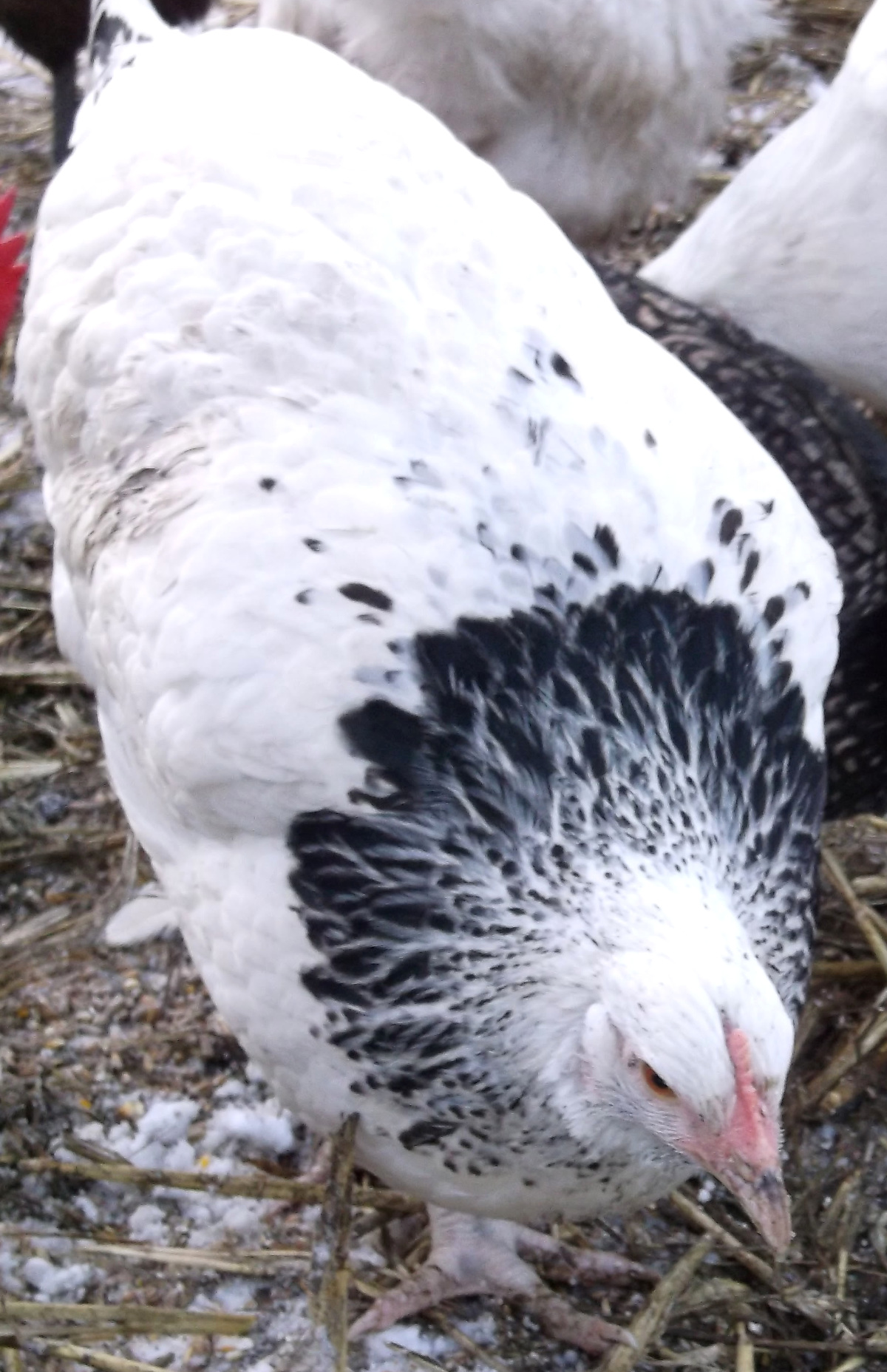A complete guide to the feather faults in chickens. What causes them and which ones can be fixed.
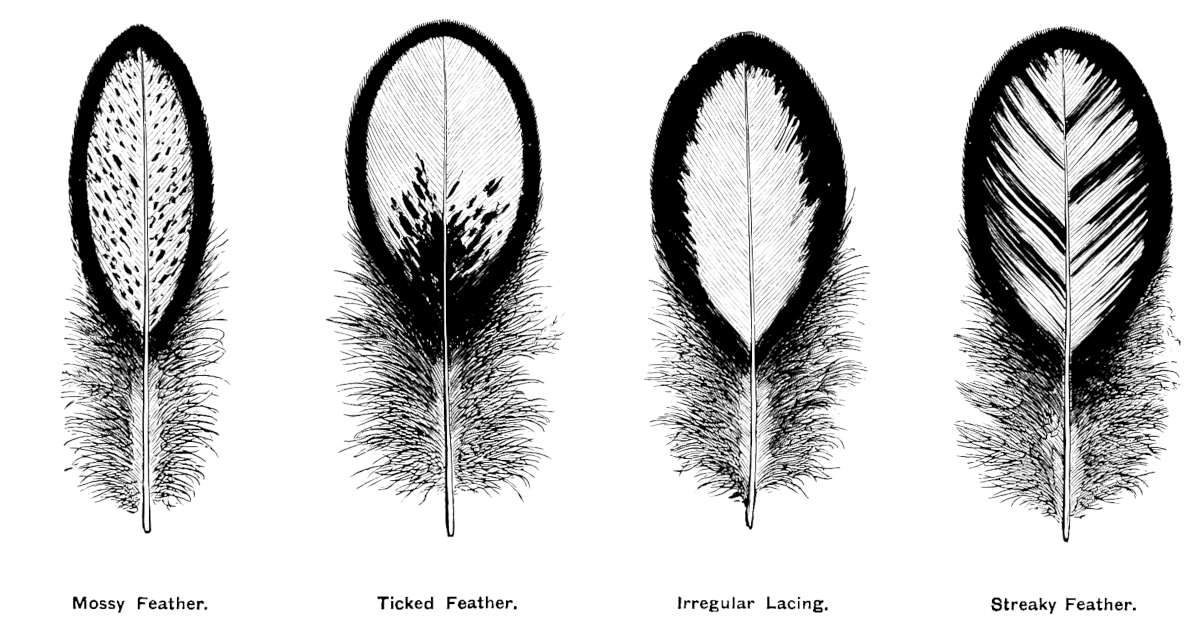
Feather faults can be a complex problem, not least because some are allowed in some breeds. Shafting for example is not permitted in the Waynadotte or the Barnevelder but is allowed in the Welsummer and some other breeds.
Table of Contents
Correcting feather and pattern faults is almost always down to good selection of breeding stock and the culling of unsuitable birds from the program.
List of the common feather faults in chickens:
- Brassiness: Brassiness is the yellow or golden colour that appears in the hackles and across the back in affected birds.
- Colour leakage: Leakage is a colour in the feathers where it is not wanted.
- Incomplete Feathering: If a chicken's feathering isn't complete according to the breed standard, such as missing feathers in specific areas, it can be considered a fault.
- Feather Length: Feathers that are too short or too long compared to the breed standard can be considered a fault. Some breeds have specific feather length requirements.
- Shafting: Shafting is where the centre quill of the feather is a different colour to the rest of it.
- Feather shape: Long thin feathers are called almond feathers and short fat feathers are called open feathers.
- Lack of Lustre: In some breeds, feathers are expected to have a particular sheen or lustre. Dull or matte feathers might be seen as a fault.
- Crossed Feathers: Feathers that cross over each other in an unusual way can give an unkempt appearance and may be considered a fault.
- Feather Splitting: Feathers that split or fray at the ends can make a bird look untidy and less polished.
- Mismarked Feathers: For birds with specific markings, such as lacing or striping, feathers that don't have the correct markings can be considered a fault.
- Unbalanced Feather Distribution: If a chicken's feathering is unevenly distributed, with some areas having thicker or thinner feather cover than others, it can be considered a fault.
Brassiness in feathers:
The amount of brassiness in a bird's feathers can vary from bird to bird. Some birds may have only a slight tint of brassiness, while others may have feathers that are completely yellow or orange.
Below: A leghorn cockerel show the bright yellow brass colour in his feathers.
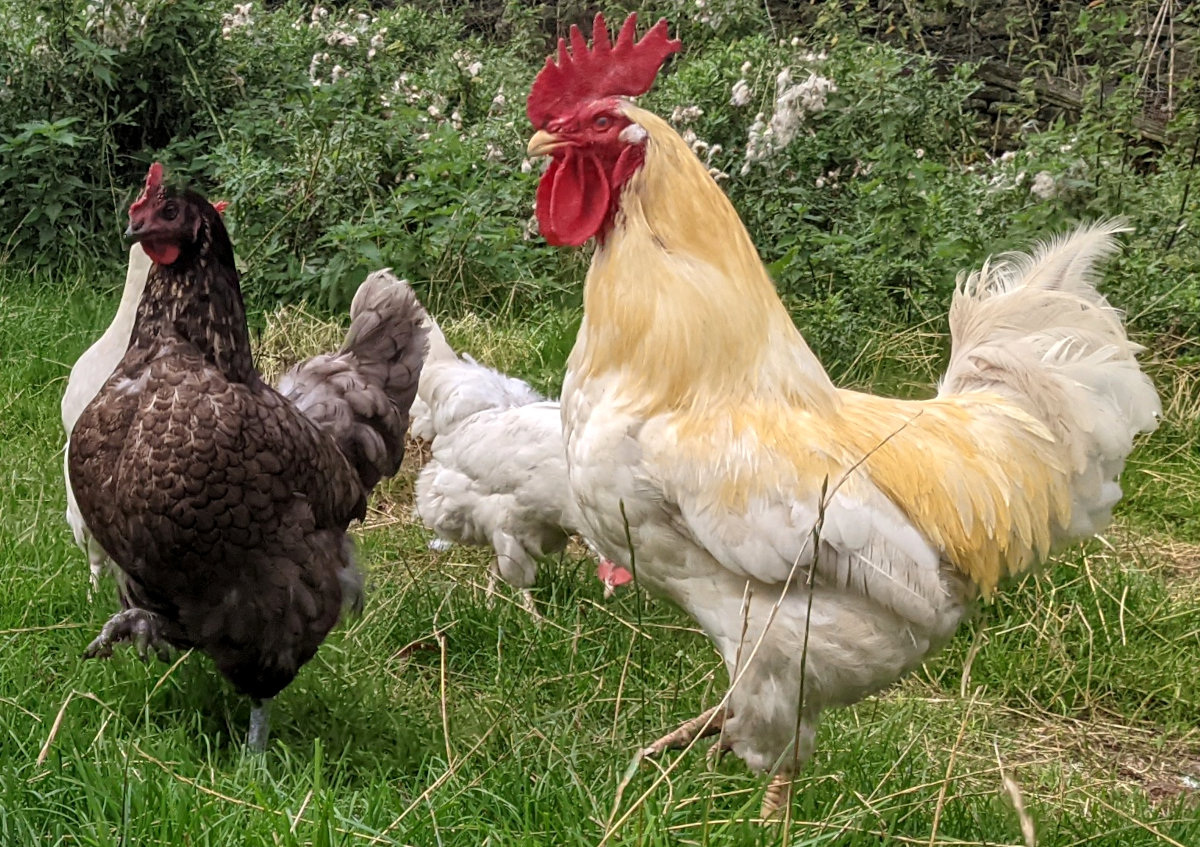
Brassiness in feathers is a yellow or orange tint that can be caused by a number of factors, including:
- Diet: Birds that eat a diet high in carotenoids, such as yellow or orange fruits and vegetables or a corn rich diet, may develop brassy feathers.
- Genetics: The colour can be caused by the birds genetic makeup.
- Age: As birds age, their feathers may naturally become more brassy.
- Sun exposure: Birds that are exposed to a lot of sunlight may develop brassy feathers. If the sun is to blame the feathers will be white again after the moult.
- Disease: In some cases, brassiness in feathers can be a sign of a disease, such as liver disease or malnutrition.
Brassiness is most noticeable in birds with light feathers. In birds with dark feathers, the brassiness may be much more noticeable. It is not always permanent. In some cases, the brassiness will fade over time, especially if the underlying cause of the brassiness is addressed.
Remedies for brassiness in feathers include giving more shade and changing the diet. Careful breeding selection can breed the tendency out over time.
Colour and red leakage in feathers:
Leakage in chickens means that there is a colour in a place it is not wanted, red on a black and white bird for example. In some standards around the world it is simply known as "A foreign colour"
Colour leakage can come from many different feather colours but may not be visible in all feather colours.
Colour leakage often shows to a much greater extent in males than it does in females.
Fixing colour leakage requires careful Sire and dam selection over several generations along with test mating and hatching between suitable birds.
Below: I had considerable problems with red leakage when I was breeding my Silver Laced Barnevelders.
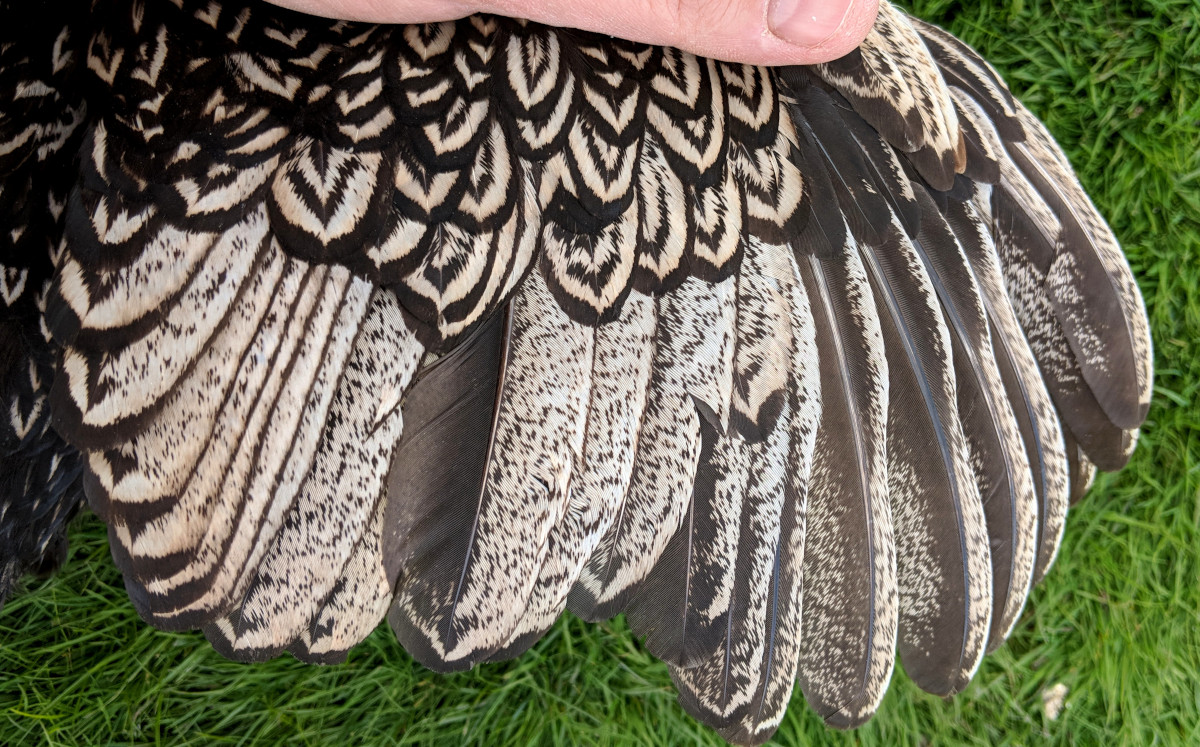
You can see how the red ground colour is leaking into the white parts and creating a muddy effect.
Feather pattern faults:
Faults in the patterns of a chickens feathers can be cause by genetic or environmental conditions. Sometimes an illness or a check to the growth of a bird can affect the way a pattern is laid down as the feather grows.
Spangling is when the pigment is concentrated at the end of the feather and a ticked feather has the pigment concentrated at the base.
An almond feather is one that is longer and thinner than it should be and an open feather is shorter sand fatter than the standards call for.
A mossy or peppercorn feather is one that has spots, this is particularly common on the wing and tail feathers.
Below: There are numerous faults found in the patterns on a chickens feathers, this shows 8 of them.
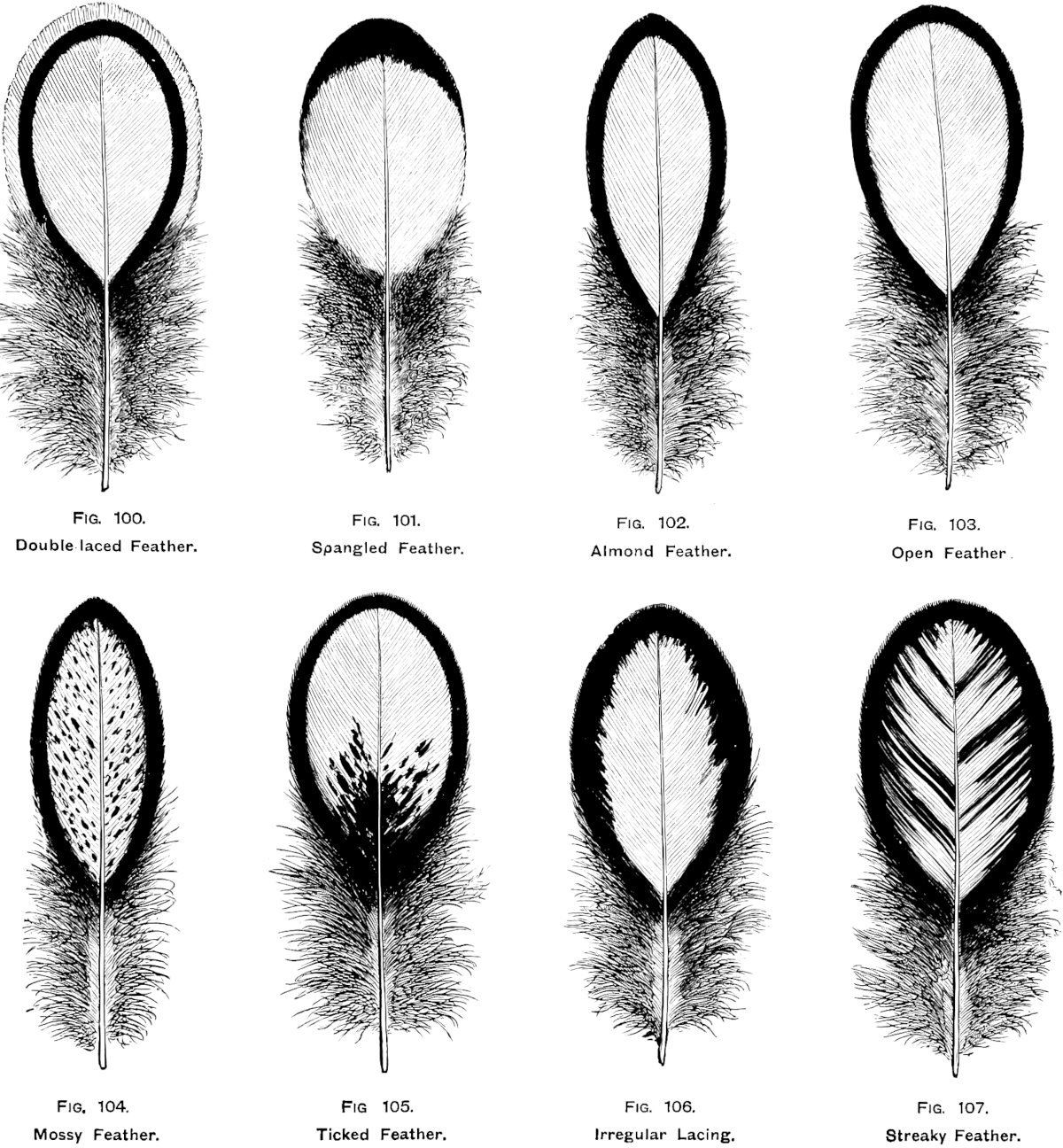
Streaky feather have lines from the shaft out to the tip.
V shaped barring and uneven lines are faults in barred feathers.
Below: Here is a plate showing the poor (on the left), okay (in the middle) and good (on the right) barring from a Plymouth rock.
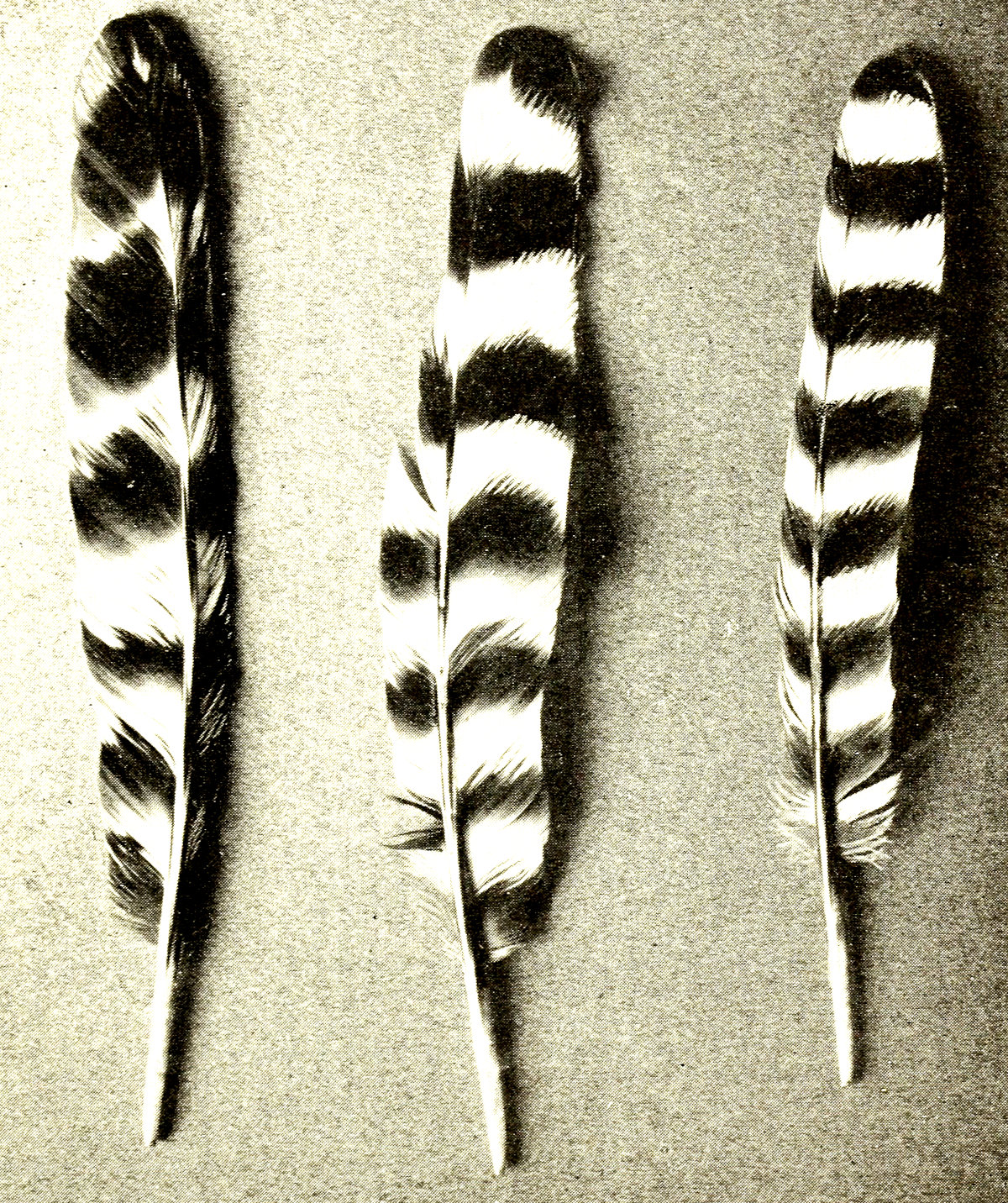
Lacing has many pattern faults, the most common being uneven or jagged lacing.
Below: Showing the lacing faults.
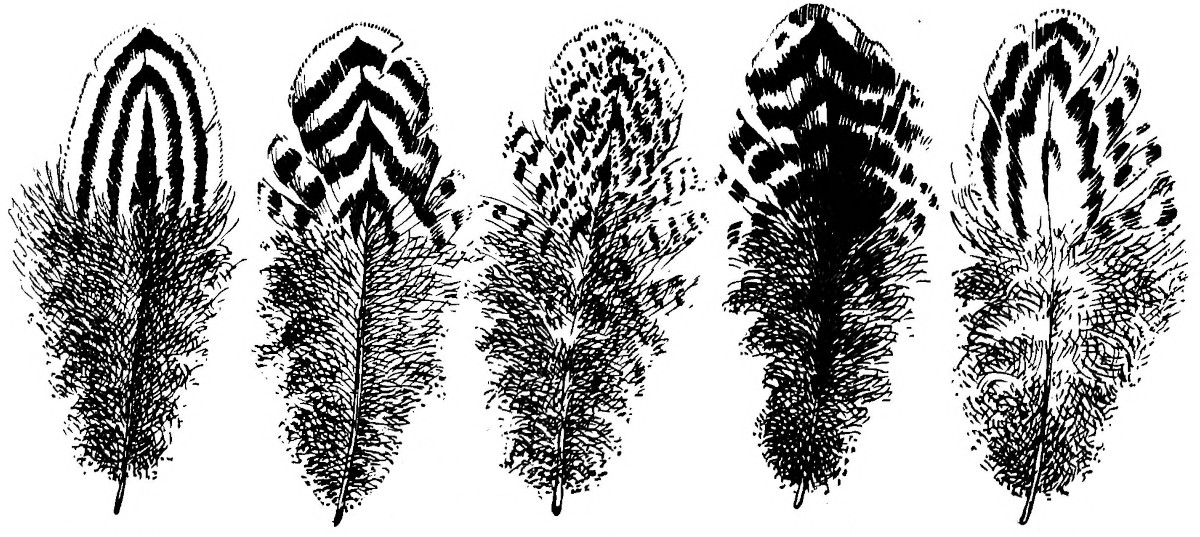
Below: Lacing should be an even pattern.

Misplaced feathers:
This is when feathers of colour are found outside of the pattern.
Below: The black neck feathers have extended down the neck on this Light Sussex hen.
